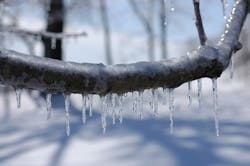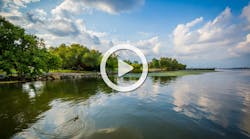Ecologists Investigate Impact of Ice Storms
New England ecologists studied the impact of ice storms at the USDA Forest Service Hubbard Brook Experimental Forest in White Mountains, New Hampshire. The ecologists simulated ice storms of varying intensity by spraying water from nearby creeks onto sections of the forest through a fire hose during the coldest part of night.
The team sprayed water to form light icing, significant icing and extreme icing in order to compare the effects of storms from varying intensities. While the study won’t conclude until next year, the scientists hope to learn how ice storms impact long-term forest health.
Lead ecologist on the project, Lindsey Rustad, said, "Our forests are tremendously resilient. I grew up in the days of acid rain so scientists embarked on a couple decades of exhaustive research and we passed the Clean Air Act, and reduced sulfur emissions by 80%."
Rustad noted forests are capable of recovering after a light icing, but increasingly severe icing threatens long-term forest health.
Related Articles:


